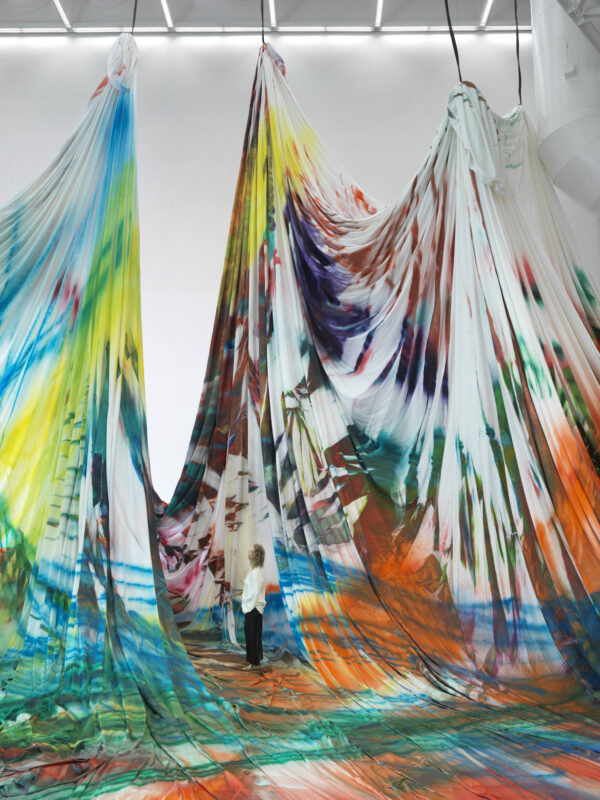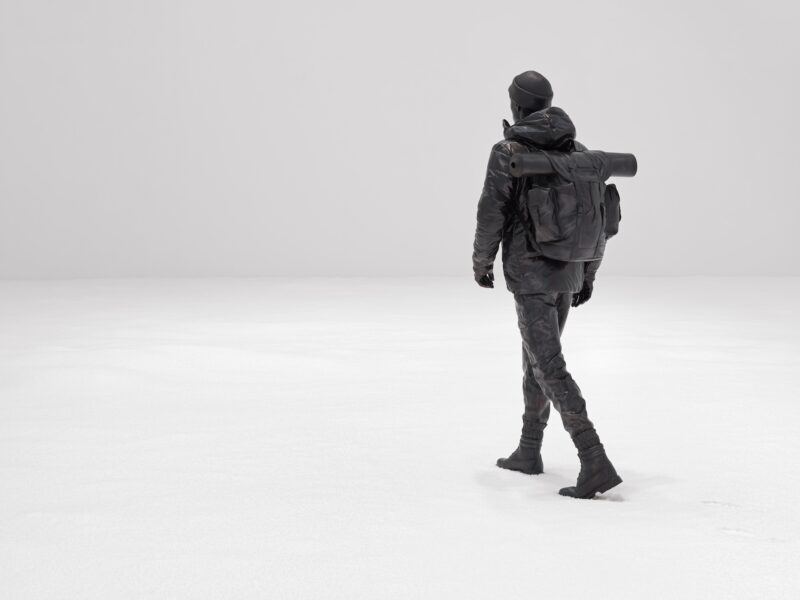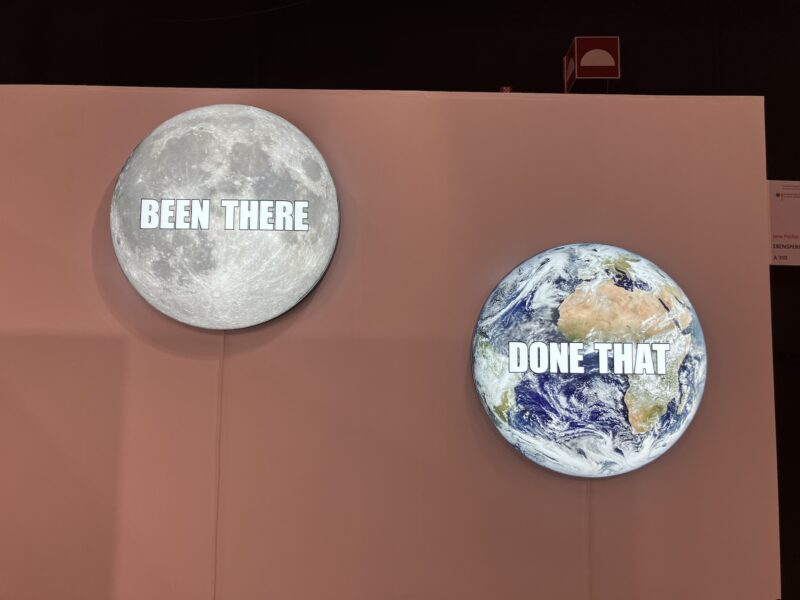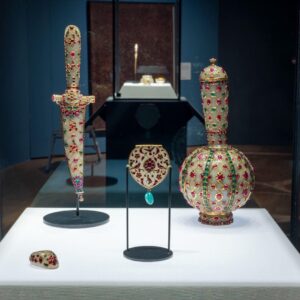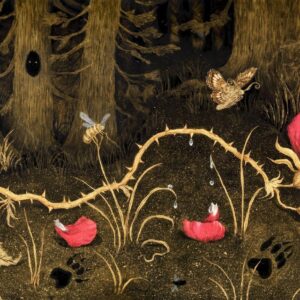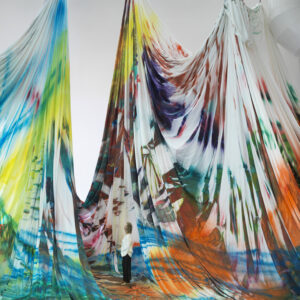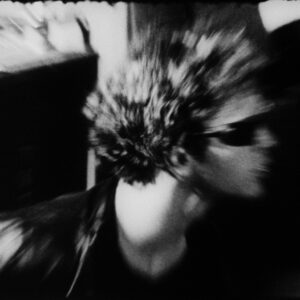Galerie Max Hetzler is pleased to present Spectrum without Traces, a solo exhibition by Katharina Grosse showing a completely new body of work on canvas from the past year. In conjunction with the exhibition at Potsdamer Straße, the Window Gallery at Goethestraße 2/3 will display Grosse’s Untitled, 2023. This is the artist’s first presentation at the gallery.
One of the most important painters of today, Katharina Grosse is internationally recognised for her bold, haptic paintings and saturated use of colour. Since the late 1990s, Grosse has employed a spraying technique to attack, redefine and subvert traditional notions of painting. Her kaleidoscopic vision spills into the physical world, sweeping across walls, floors, ceilings, everyday objects and sculptural structures. Through this radical inclusion of space as a field of action, the artist achieves a paradoxical clash of the expansion of colour with our material existence. Tracing the artist’s thought process or gaze, colour takes on a lifeforce of its own. Parallel to her in-situ works, the artist continues to pursue her studio paintings, of which the new body of work is the latest iteration.
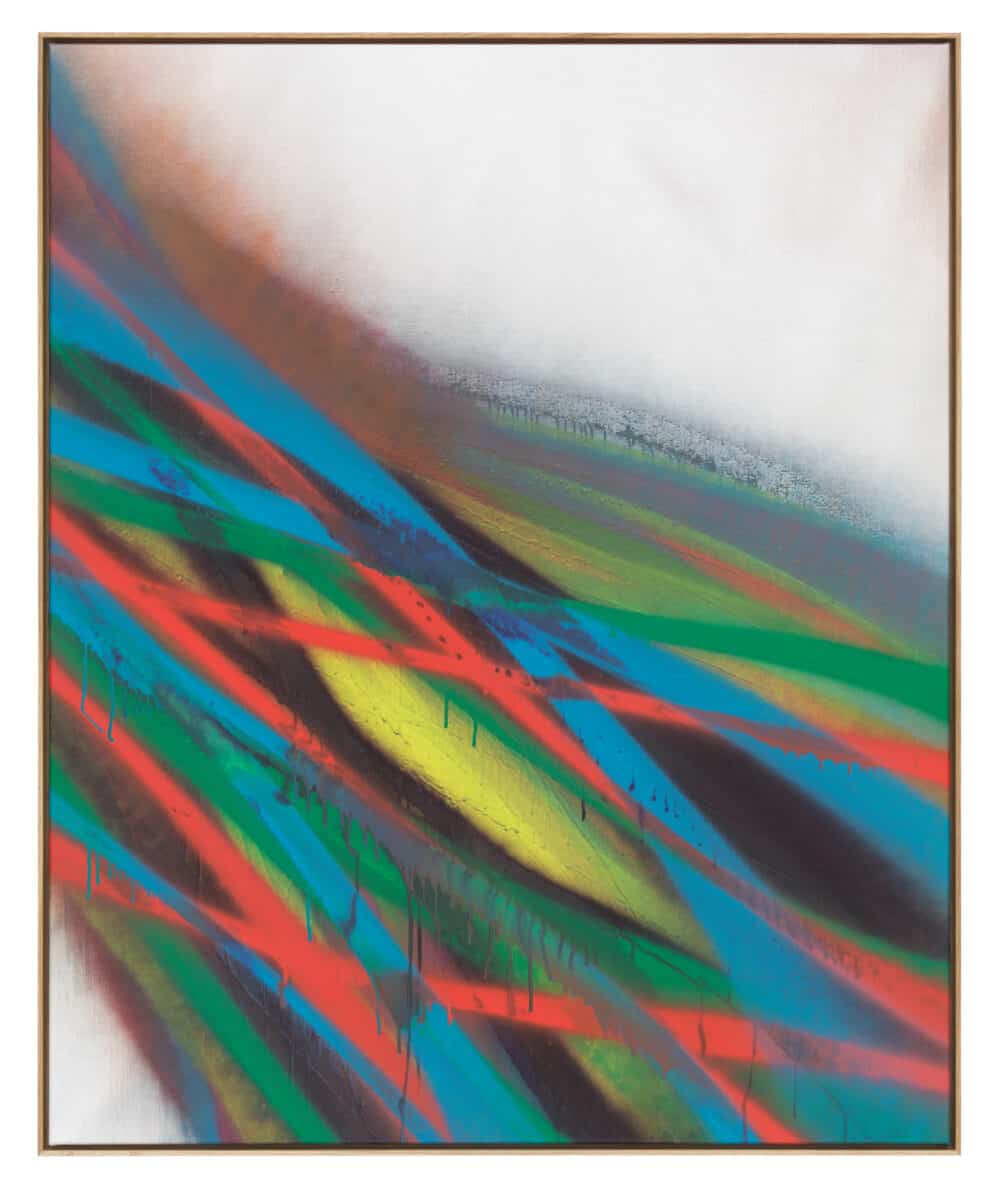
For her exhibition Spectrum without Traces, Katharina Grosse has limited her palette to six colours, which were sprayed unmixed onto the canvases. Multiple paintings were made simultaneously; they belong to the same family, but the way the colours mingle differs per painting. Sometimes they are close to each other, a red near a pink, creating a fluid transition. Elsewhere, a yellow is taking the lead, claiming the main part, or there is a deep purple leaving a dark note. Yet the colours never show up alone – in each painting, they are part of a bundle, inseparable in perception. What we see are strings of colours, some of them looping in parallel movement, others entangled or crossing. As a whole, they seem to move, floating or cutting through a white(ish) space.
There is a play between sharp lines with clear focus and areas where the borders are blurry and soft. Through this interaction, different sensibilities are articulated, from firm and decisive to a milder touch. Folds in the fabric are suggested on a canvas that is tightly stretched. Is it illusionism? In fact, a light rain of sprayed paint has left an imprint of the folds that were visible when the canvas was still hanging on a few nails in the studio. Such effects create switches between seeing illusions of things we recognise and seeing a surface with shapes that are just marks, the here and now of paint at play.
These perceptual switches are enhanced by fragments of figuration. No person, landscape, or object is depicted, and yet there are allusions to human action, as well as to nature, or to materials. The forms bear witness to physical gestures, to the arm and shoulder movements needed to produce loops, curves, and colour clashes. Other strings of colour make use of the same formal vocabulary that appears in nature:
thick patterns of dense bushes, the gentle contours of a hill. The allusion to nature is supported by actual branches of bushes integrated into some of the paintings. Found around the studio where the works were made, the branches come from a coastal landscape, where hard winds and long views over water and skies are more present than fellow human beings.
Everything in these works revolves around colour and its potential to attach itself to familiar forms but also to dematerialise – remaining present but without an identity.
There is an ongoing sense of movement. A node of strings flare upwards like fire alighting, and then the lines exit the frame sideways, directed to some imaginary point outside the painting. In fact, in most of the paintings, the motifs relate to a world outside the frame, as if to draw our attention away from the work. In that sense, the paintings operate not unlike the works Grosse has made in open-air situations, where there is no frame setting the work of art apart from its surroundings.
Rather than being invited to contemplate each of the paintings individually as a projection of an inner state, or as a collection of abstract expressionist gestures, we encounter a type of painting that reaches out to extend itself in space, sending our attention all around. It draws connecting lines and creates dynamics, facilitated by an ongoing streaming of colours. Whether we are directly in front of the works or
looking at them from the side, the paintings affect what we see. Even if they just appear in the corner of our eye, they emanate a vivid energy, and make sure to be seen. Yet in terms of meaning, of saying what they are, they behave modestly, leaving themselves open to interpretations of different kinds. The proposition of this work seems to enhance colour in our field of vision, in our ways of seeing. No other story is told. Rather than pure depiction, symbolism, or narrative, it is colour itself that creates the space and has the ability to shift perspective, add a layer, affect the spirit and senses. Colour does not belong to a single figure or situation, it moves freely and can attach itself to any context.
Text – Jurriaan Benschop – An extended version will be published in the forthcoming catalogue
Katharina Grosse, Spectrum without Traces, Galerie Max Hetzler, Potsdamer Straße 77 – 87, 10785 Berlin, 17th March – 30th April 2023, Opening: Friday, 17th March, 6 – 8 pm
About the artist
Katharina Grosse (b. 1961, Freiburg im Breisgau, Germany) lives and works in Berlin and New Zealand. Her recent institutional exhibitions and on–site paintings include psychylustro as part of the Philadelphia Mural Arts Programme (2014); yes no why later at the Garage Museum of Contemporary Art, Moskow (2015); Seven Hours, Eight Rooms, Three Trees at Museum Wiesbaden (2015); Untitled (Trumpet) for the 56th Biennale di Venezia (2015); Katharina Grosse at Museum Frieder Burda, Baden-Baden (2016); Rockaway for the MoMA PS1-Program Rockaway! in Fort Tilden, New York (2016); Asphalt Air and Hair at the ARoS Triennale, Aarhus (2017); This Drove My Mother up the Wall at South London Gallery (2017); The Horse Trotted Another Couple of Metres, Then It Stopped at Carriageworks, Sydney (2018); Wunderbild at the National Gallery in Prague (2018/2019); Mumbling Mud at chi K11 art museum in Shanghai (2018/2019) and at chi K11 art space in Guangzhou (2019); the double exhibition Mural: Jackson Pollock I Katharina Grosse at Museum of Fine Arts, Boston (2019); Is It You? at Baltimore Museum of Art (2020/2021); It Wasn’t Us at Hamburger Bahnhof – Museum für Gegenwart – Berlin (2020/2021); Shutter Splinter for the Helsinki Biennale (2021); Chill Seeping from the Walls Gets Between Us at HAM – Helsinki Art Museum (2021/2022); Chill Seeping at SCAD – Museum of Art, Savannah (2022); Apollo, Apollo as part of the accompanying programme to the 59th Biennale di Venezia in the Espace Louis Vuitton, Venice (2022); Destroy Me Once, Destroy Me Twice on the grounds of the Roskilde Festival (2022); Studio Paintings, 1988–2022: Returns, Revisions, Inventions at Mildred Lane Kemper Art Museum, St. Louis (2022, currently on view at Kunstmuseum Bern); as well as Splinter at the Fondation Louis Vuitton in Paris, where Grosse’s permanent work Canyon was revealed in dialogue with Frank Gehry’s architecture last year.
Katharina Grosse’s works are in the collections of Albertina, Vienna; Albright-Knox Art Gallery, Buffalo, NY; Arken – Museum for Modern Art, Copenhagen; the Baltimore Museum of Art; Centre Georges Pompidou, Paris; Istanbul Modern; Kunsthaus Zürich; Kunstmuseum Bonn; K21 – Kunstsammlung NRW, Dusseldorf; Lenbachhaus, Munich; Fondation Louis Vuitton, Paris; Magazine III, Stockholm; MARe (Muzeul de Art? Recent?), Bucharest; MAXXI – Museo nazionale della arti del XXI secolo, Rome; Milwaukee Art Museum, Milwaukee; Museum Azman, Jakarta; Museum of Fine Arts Bern; Museum of Fine Arts, Boston; Museum of Modern Art, New York; Nasher Sculpture Center, Dallas; Pérez Art Museum, Miami; Serralves Museum, Porto; Staatliche Museen, Berlin; and Queensland Art Gallery and Gallery of Modern Art, Brisbane.
